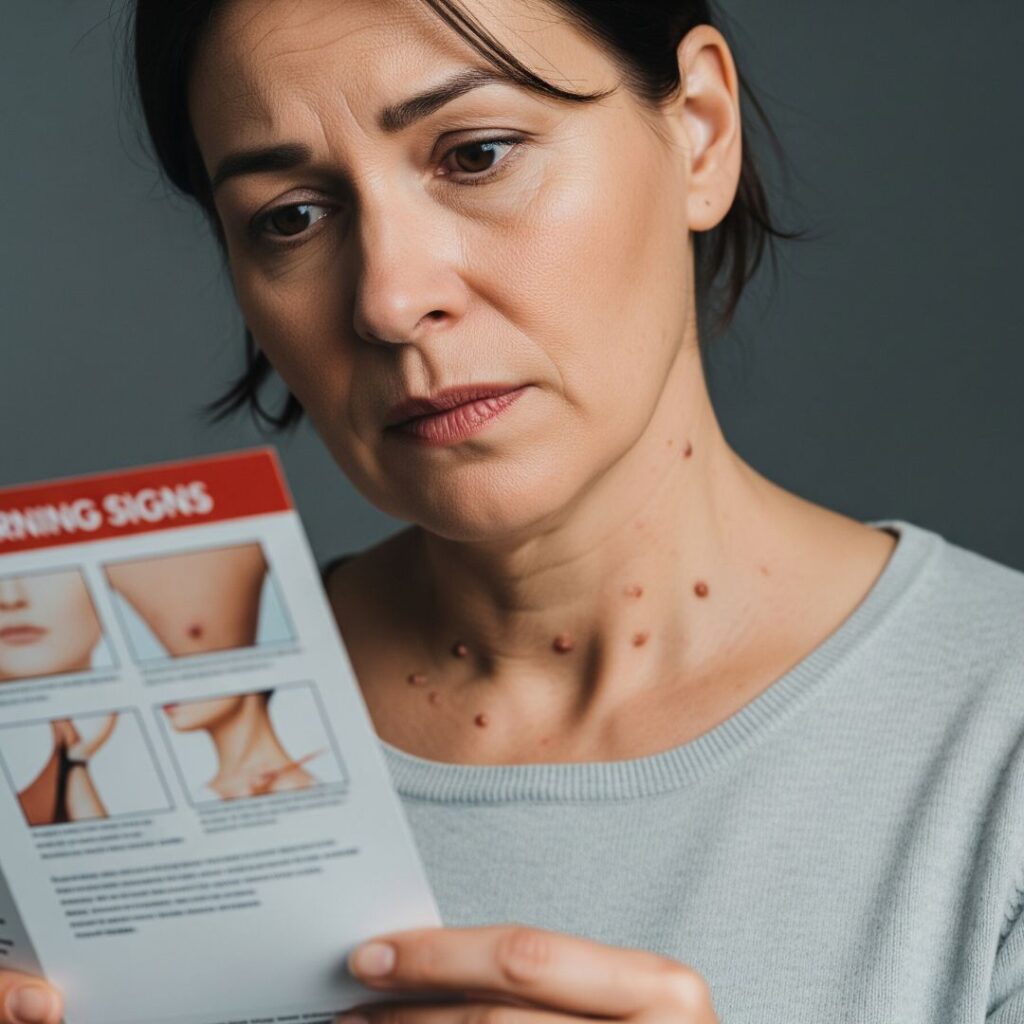Skin tags may seem harmless, but certain changes can be a sign that it’s time to consult a professional. These small, soft, skin-colored growths are common in adults.
While often benign, some skin tags may need medical evaluation—especially if they start changing in appearance or causing discomfort.
In this blog, we’ll explore when to see a skin specialist, what warning signs to watch for, and how a Dermatologist in Roorkee like Dr. Hera Tabassum can help with diagnosis and safe removal.
What Are Skin Tags? Are They a Cause for Concern?
Skin tags, also known as acrochordons, are small, non-cancerous growths that usually appear in areas of skin folds such as the neck, underarms, eyelids, groin, or under the breasts. They are soft to touch and often hang off the skin by a small stalk.
Most skin tags are harmless and painless, but unusual changes should be evaluated by a skin specialist in Roorkee to rule out more serious skin conditions.
Why Do Skin Tags Develop?
Skin tags are caused by:
- Friction between skin folds or clothing
- Hormonal changes (common during pregnancy)
- Genetics
- Obesity or weight gain
- Type 2 diabetes and insulin resistance
They are more likely to occur in people over the age of 40 but can affect anyone.
When Should You See a Dermatologist?
While most skin tags don’t require medical attention, certain symptoms should not be ignored. Seek help from a qualified Dermatologist in Roorkee if you notice the following:
1. Rapid Changes in Appearance
- Sudden growth in size
- Irregular or asymmetrical shape
- Darkening, reddening, or multi-color appearance
These changes could signal that the skin tag is not what it seems and needs professional evaluation.
2. Pain, Bleeding, or Inflammation
If a skin tag starts to:
- Bleed frequently
- Cause pain when touched
- Get inflamed or infected
…it’s time to book an appointment with a skin specialist in Roorkee.
3. Persistent Itching or Rash
Skin tags that itch constantly or trigger rashes—even after using over-the-counter treatments—may require a dermatologist’s review.
4. Non-Healing Sores or Crusting
A sore that doesn’t heal within two weeks can be a sign of a more serious condition such as skin cancer. Never ignore non-healing lesions near or on a skin tag.
5. Emotional Discomfort or Sleep Disturbance
If a skin tag causes emotional stress, anxiety, or physical discomfort that disrupts sleep or daily life, consult a professional.
Unsure If It’s a Skin Tag? Here’s How a Dermatologist Can Help
Skin tags are often mistaken for moles, warts, or even cysts. A trained Dermatologist in Roorkee, such as Dr. Hera Tabassum, will:
- Visually inspect the growth
- Use a dermoscope for closer evaluation
- Conduct a biopsy, if necessary
Proper diagnosis is crucial, especially if the growth is unusual or rapidly evolving.
Safe and Effective Skin Tag Removal Options
Depending on the tag’s size and location, your skin specialist in Roorkee may recommend:
- Cryotherapy – freezing the tag with liquid nitrogen
- Cauterization – burning off the growth with heat
- Excision – cutting it off using sterile surgical tools
- Laser removal – precision removal with minimal scarring
These treatments are typically quick, safe, and painless, especially when performed by a qualified professional like Dr. Hera.
Can You Prevent Skin Tags?
While skin tags aren’t entirely preventable, some practices may reduce their occurrence:
- Maintain a healthy weight
- Avoid tight clothing and accessories that rub against the skin
- Use talcum powder in friction-prone areas
- Manage blood sugar levels if diabetic
Regular checkups with a Dermatologist in Roorkee can help monitor changes and catch issues early.
Frequently Asked Questions (FAQs)
Q1: Can skin tags turn into cancer?
No, skin tags are benign. However, changes in size, color, or texture should be evaluated by a dermatologist.
Q2: Is it safe to remove skin tags at home?
DIY removal can cause bleeding, infection, or scarring. It’s safer to visit a skin specialist for professional removal.
Q3: Why am I suddenly getting more skin tags?
Sudden appearance could be due to hormonal changes, friction, or metabolic conditions like diabetes.
Q4: What’s the difference between a skin tag and a mole?
Skin tags are soft and hang off the skin. Moles are typically pigmented and may be flat or raised. When in doubt, consult a Dermatologist in Roorkee.
About the Author – Dr. Hera Tabassum
Dr. Hera Tabassum is a renowned Dermatologist in Roorkee, offering expert diagnosis and advanced treatment options for skin tags, moles, warts, and other skin concerns.
At Dr. Hera’s Skin & Hair Clinic, patients receive personalized, affordable, and compassionate care.
Clinic Address:
Dr. Hera’s Skin & Hair Clinic, Malviya Chowk, near Bank of India, Roorkee, Uttarakhand 247667
dr.heraskinandhairclinic@gmail.com
Final Thoughts
Skin tags are generally harmless, but any unusual symptoms should not be ignored. If unsure about a skin growth—or if it’s causing discomfort or cosmetic concerns—consult a qualified skin specialist in Roorkee for peace of mind and professional care.

